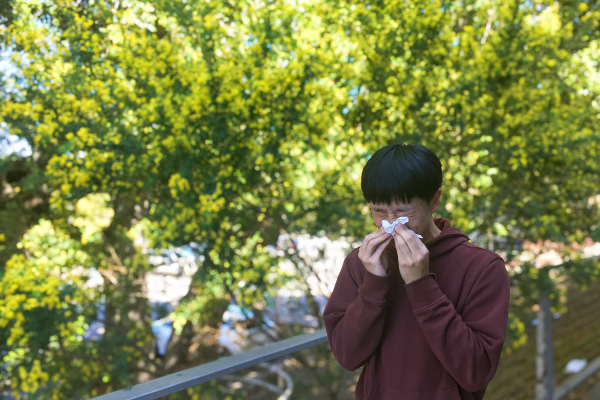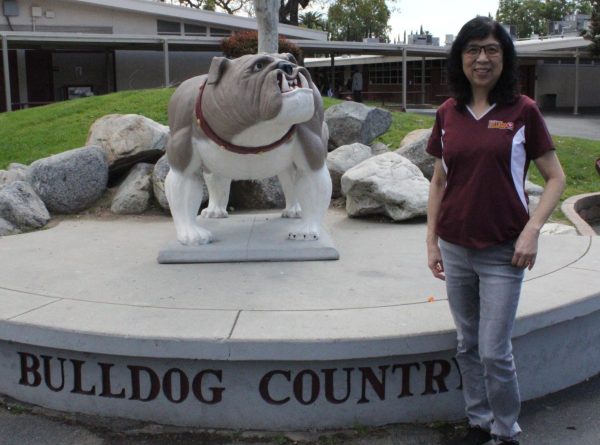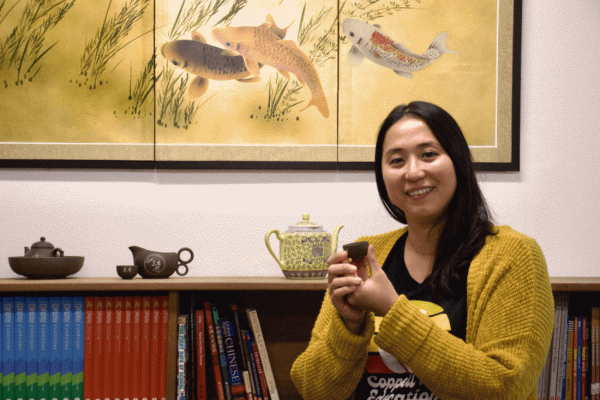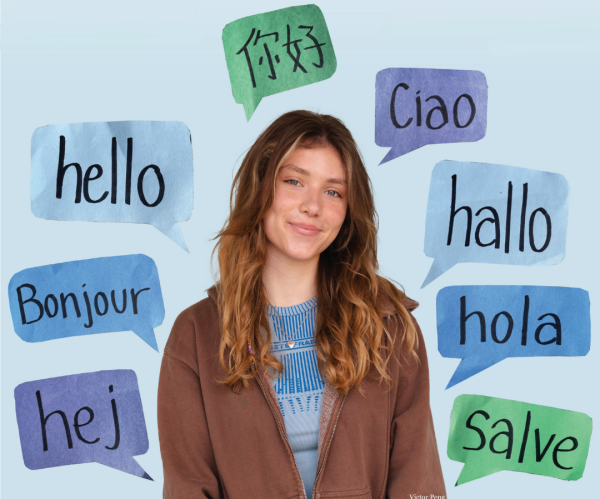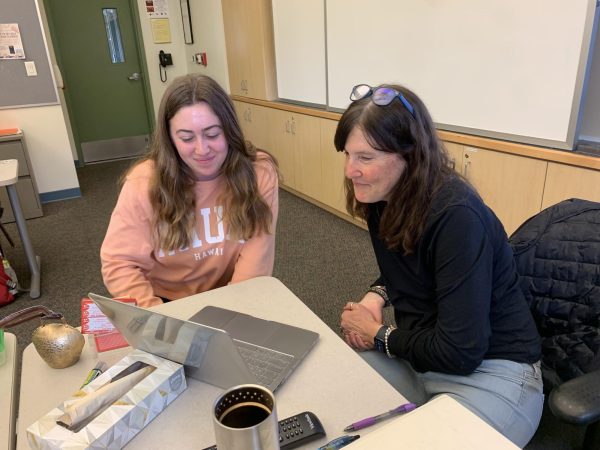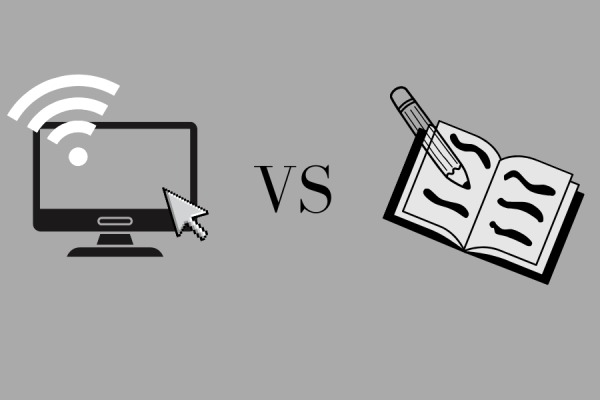Polio Pioneer
In 1954, dance team coach Marion Gould participates in the vaccine trial for polio.
Dance team coach Marion Gould, known as G, was a part of the original vaccine trials for polio when she was young.
February 19, 2021
Twenty-eight. This is the number of effective vaccines people have created in human history. This number is astonishing and terrifying considering the fact that, according to National Geographic, our planet contains 10 nonillion (that’s 10 to the 31st power) individual viruses. These microorganisms have a much greater impact and hold on our modern day society than we realized. Though the fear of a virus is new to our generation, those who grew up in the 1950’s and earlier are familiar with this threat as well as the hope for a vaccine.
Dance team coach, known as G, was one of the many children to participate in a vaccine trial for the polio virus. Marion Gould, or Marion White as she was known then, was just 7 years old when in 1954 she became a polio pioneer. Gould participated in the trial of Jonas Salk’s inactivated polio vaccine, which was the largest study in medical history with 1.8 million second grade children receiving a vaccination at school.
Gould grew up with daily reminders of the possibly devastating effects of polio. Polio is a highly infectious disease that invades the nervous system and attacks the lungs, leaving many of those infected with partial or total paralysis. Gould’s best friend’s sister was a survivor of a severe case of polio. The disease left her in an iron lung, paralyzed from the neck down.
“Whenever I would go to my neighbor’s house we would make it a point to go spend time with her sister since she couldn’t go out to play,” Gould said.
At the time outcomes such as these provided a visual and real fear for children and their parents of the potential devastating effects of the virus. Part of the fear was that so much about Polio was unknown.
“They didn’t know what was causing polio or how exactly it was spread” Gould said, “So my mother wouldn’t let me go to the community swimming pool in the summer or to big crowds.”
It was totally new to doctors like this virus is now. They didn’t know what it was, how it started, or how it was transmitted.
— Liz Lewis
Gould’s 93-year-old aunt, Liz Lewis, also remembers the experience of polio in the 1940s and 50s. She reflected on the fact that information about polio came only through radio communication and newspapers rather than the vast array of social media outlets and internet sources that lay at the fingertips of our generation.
“It was totally new to doctors like this virus is now. They didn’t know what it was, how it started, or how it was transmitted. It wasn’t even named until later on when they knew more about it” Lewis said.
Lewis also recalled that her mother had a mysterious illness at 10 years old with a high fever that left her unable to leave her bed for two months. Although she recovered, her right leg was rendered stiff and immobile for the rest of her life.
“When the concept of polio finally came out I remember telling my mama that may be what she had years and years ago back in the 1880’s” Lewis said.
Both Lewis and Gould grew up in Louisiana where community was a key part of their lifestyle. Gould participated in the vaccine trial mainly because during the time they saw the virus not as polarizing but unifying. This ability to come together was also necessary because at the time there was little funding for scientific endeavors.
“People would really try to contribute the best that they could because we didn’t have a whole lot of money to try and find a cure,” Gould said, “I remember being sent to school on various occasions with a dime to help finance.”
This drive to raise money was motivated largely by the fact that polio had the greatest impact on children. Contrary to the situation now, where older generations are more at risk, Gould’s parents based their decision to participate in the trial on their desire to protect their child. Many parents made the same decision, which is why the polio vaccine trail was so large. Similar to the situation we are living through now, fear of polio was prominent because everyone knew it was spreading, but they did not know exactly how or why.
One of the most remarkable factors in Gould’s story is the fact that the trial vaccine she was given was never licenced or patented. The vaccine created by Dr. Jonas Salk was not in any way funded, approved, or licensed by the government. This fact might have been why Gould was so
incredibly frightened at the thought of getting a vaccine. Or perhaps, since she was only a young girl, she simply only felt the general fear of shots that we all feel when visiting the doctor’s office.
“I was just worried about the series of three shots and a booster, but I also understood that it could keep me from getting sick” Gould said.
When the time came for the vaccine to be administered, Gould went to school with the rest of her second grade class. They lined up in assembly fashion and, one by one, entered their gymnasium to receive a vaccine. Since vaccines were so different at the time, Gould remarked on the fact that she still has a physical scar from the experience to this day. In the end, the vaccine had been created in an innovative fashion that worked remarkably well.
“They did the test with us and they found it to be extremely successful pretty quickly so then that’s when they rolled out the shots and gave them all over the place” Gould said.
Once the vaccine was proven, it was given to children throughout the United States and later, the world. It was administered in a similar fashion to the way it was tested, at school. Marion Gould’s husband, Rusty Gould, did not participate in the vaccine trials, but he recalls receiving the vaccine. According to Rusty, his class was lined up in a line outside of the gym, and they were sent in one at a time to receive the vaccination. Like Marion, Rusty feared receiving the shot because shots were not typically given to children during the time.
“When the vaccine came along there had never been a mass vaccination like that,” Rusty Gould said, “To my knowledge at that time I didn’t remember having gotten a shot before so I was pretty nervous.”
Though many of the children may have been nervous, the vaccine had been tried and proven by pioneers like Marion Gould. She still has her Polio Pioneer pin as a reminder of her experience and courage. Jonas Salk never patented the vaccine, instead donating the rights to the vaccine as his gift to humanity. There are multiple vaccines in trial right now in today’s efforts to find a cure for COVID-19. Society can only hope that innovators such Salk and trailblazers like Marion Gould remain today to participate in the creation of the COVID-19 vaccine.
“I hope a safe vaccine and treatment methods are found sooner rather than later,” Marion Gould said, “I hope we find a successful new normal and learn from our past experiences.”
This story was originally published on Le Journal on February 5, 2021.
































![IN THE SPOTLIGHT: Junior Zalie Mann performs “I Love to Cry at Weddings,” an ensemble piece from the fall musical Sweet Charity, to prospective students during the Fine Arts Showcase on Wednesday, Nov. 8. The showcase is a compilation of performances and demonstrations from each fine arts strand offered at McCallum. This show is put on so that prospective students can see if they are interested in joining an academy or major.
Sweet Charity originally ran the weekends of Sept. 28 and Oct. 8, but made a comeback for the Fine Arts Showcase.
“[Being at the front in the spotlight] is my favorite part of the whole dance, so I was super happy to be on stage performing and smiling at the audience,” Mann said.
Mann performed in both the musical theatre performance and dance excerpt “Ethereal,” a contemporary piece choreographed by the new dance director Terrance Carson, in the showcase. With also being a dance ambassador, Mann got to talk about what MAC dance is, her experience and answer any questions the aspiring arts majors and their parents may have.
Caption by Maya Tackett.](https://bestofsno.com/wp-content/uploads/2024/02/53321803427_47cd17fe70_o-1-1200x800.jpg)
![SPREADING THE JOY: Sophomore Chim Becker poses with sophomores Cozbi Sims and Lou Davidson while manning a table at the Hispanic Heritage treat day during lunch of Sept 28. Becker is a part of the students of color alliance, who put together the activity to raise money for their club.
“It [the stand] was really fun because McCallum has a lot of latino kids,” Becker said. “And I think it was nice that I could share the stuff that I usually just have at home with people who have never tried it before.”
Becker recognizes the importance of celebrating Hispanic heritage at Mac.
“I think its important to celebrate,” Becker said. “Because our culture is awesome and super cool, and everybody should be able to learn about other cultures of the world.”
Caption by JoJo Barnard.](https://bestofsno.com/wp-content/uploads/2024/01/53221601352_4127a81c41_o-1200x675.jpg)





